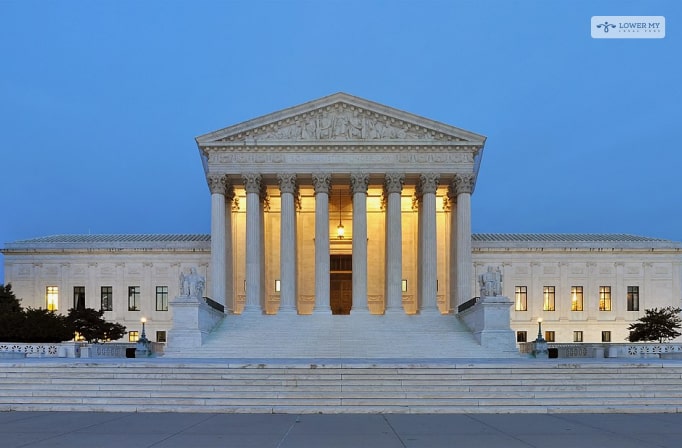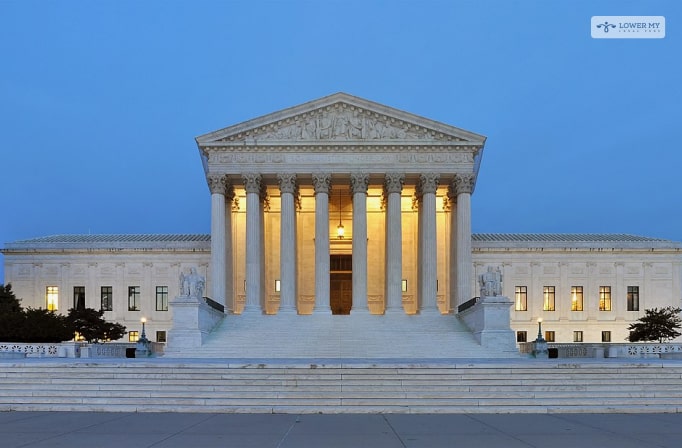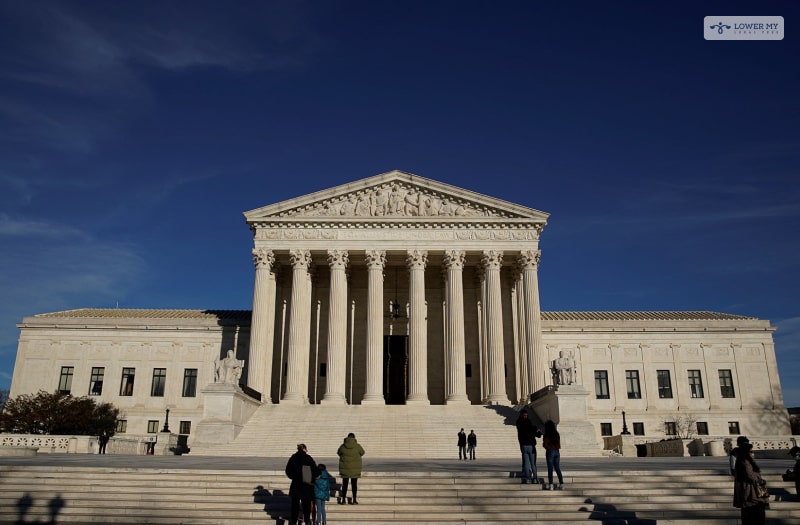You might be wondering about the process of how a case moves through the court system. It is a lengthy and timely process. In this article, we will be discussing the process of how a case moves through the court system in the US.
Map Of How A Case Moves Through The Court System

Navigating the complex labyrinth of the court system can feel like embarking on an intricate journey. Imagine a map, not of geographical terrain, but of legal landscapes, where your case is the protagonist, and justice is the ultimate destination. As we embark on this journey through the court system, let’s follow the twists and turns, mile markers, and checkpoints that your case will encounter.
1. The Filing Point:
Our journey begins at the filing point. Just like a traveler packs their bags before embarking on a trip, this is where your case is prepared and filed. Depending on the nature of your case, it could be a civil matter (disputes between individuals or entities), a criminal case (charges against an individual for a crime), or something else entirely.
2. The Route Selection:
After filing, your case is assigned to a specific court. This depends on factors like jurisdiction, venue, and case type. Think of this as choosing the best route for your journey, considering the local laws and regulations that apply.
3. The Preliminary Stage:
Next, your case enters the preliminary stage. This is akin to preparing your travel itinerary. Both parties gather evidence, exchange information, and attempt mediation or negotiation to resolve the matter before going to trial.
4. The First Checkpoint – Pre-Trial Hearings:
As we move forward, your case reaches the first checkpoint – pre-trial hearings. Here, the judge evaluates the readiness of both parties for trial, considers motions, and may make initial rulings.
5. The Crossroads – Settlements and Plea Bargains:
Before reaching the trial stage, your case might encounter a crossroads. In civil cases, this could lead to settlements, where parties agree to a resolution outside of court. In criminal cases, it might result in a plea bargain, where the defendant agrees to a lesser charge or sentence in exchange for a guilty plea.
6. The Trial Stage:
If your case continues on the path to trial, it’s time to pack for the courtroom. The trial stage is where both sides present their arguments, evidence, and witnesses before a judge or jury. Think of it as the main event of your legal journey, where justice is sought and determined.
7. The Verdict:
After the trial, the court reaches a verdict. In a civil case, this could be a judgment in favor of one party or a settlement agreement. In criminal cases, it’s a verdict of guilty or not guilty.
8. The Appeals Avenue:
If either party disagrees with the verdict, they can take a detour onto the appeals avenue. This is like checking for alternative routes on your journey. Appeals courts review the trial court’s decisions for errors in legal procedures or interpretations.
9. The Final Destination – Enforcement or Resolution:
Assuming no further detours, we reach our final destination. In civil cases, this might mean enforcing the judgment and ensuring the losing party complies with court orders. In criminal cases, it means carrying out the sentence or punishment as determined by the court.
10. End of the Road – Case Closure:
Finally, your case reaches the end of the road. Whether through settlement, judgment, or appeal, it concludes. It’s like the traveler returning home after a long journey with the court record marked “closed.”
Throughout this journey, it’s important to remember that every case is unique, and the route can vary greatly depending on the circumstances. Some cases might reach a settlement quickly, while others may meander through various stages for years.
As you navigate this intricate legal map, it’s essential to have skilled legal representation to guide you through the twists and turns. Just like a traveler relies on a trusty map, your attorney will be your compass in the complex world of the court system, helping you make the right decisions and ultimately reaching the destination of justice.
How A Case Moves Through The United States Supreme Court System?

Imagine you’re about to embark on a journey through the United States Supreme Court system. It’s like a legal rollercoaster with twists, turns, and lots of stops along the way. Strap in, and let’s break down how a case moves through this fascinating judicial maze.
Step 1: Picking the Right Case
Our adventure begins with the selection of a case. Not just any case can waltz into the Supreme Court. There’s a rigorous screening process. The Court doesn’t hear every case that’s thrown at it; it’s more like an exclusive club. To make the cut, a case usually needs to involve important legal questions, constitutional issues, or conflicts between lower courts. It needs to be a heavyweight contender, legally speaking.
Step 2: Filing the Petition
Once we’ve got our superstar case, it’s time to file a petition. This is like sending an invitation to the Supreme Court. The petitioner, usually the losing party from the lower court, writes a legal document explaining why the Supreme Court should hear the case. They’re essentially saying, “Hey, this is a big deal, and you need to take a look!”
Step 3: Responding to the Petition
The other side, known as the respondent, gets to respond to the invitation. They present their reasons why the Supreme Court shouldn’t bother with this case. It’s like a legal tug-of-war, and both sides are pulling as hard as they can.
Step 4: The Court’s Decision
Now, the nine justices of the Supreme Court have a pow-wow to decide which cases to take. It’s like a big debate club. If at least four justices want to hear the case, it gets a golden ticket – a writ of certiorari. If not, it’s game over for that case, and it stays with the lower court’s decision.
Step 5: Briefing Time
Once our case is in, it’s time for the legal showdown. Both sides submit detailed legal briefs explaining their arguments. Think of these as the script for our courtroom drama. These briefs are packed with citations, legal jargon, and all sorts of persuasive language to win the hearts and minds of the justices.
Step 6: Oral Arguments
Now, the fun part! Oral arguments are like the main event. Each side gets a limited amount of time (usually 30 minutes) to present their case to the justices. It’s a grilling session where the justices can ask tough questions, and lawyers need to be quick on their feet. This is where the drama unfolds.
Step 7: Behind Closed Doors
After the fireworks of oral arguments, the justices retreat behind closed doors to deliberate. They discuss the case, share their thoughts, and cast their votes. It’s like a top-secret strategy session where they decide who’s won the legal battle.
Step 8: The Opinion
Finally, after weeks or months of deliberation, one of the justices is tasked with writing the majority opinion. This is the official explanation of the Court’s decision. Sometimes, there are concurring or dissenting opinions, where justices who didn’t agree with the majority explain why. It’s like the grand finale, where all the loose ends are tied up.
Step 9: The Verdict
The majority opinion is released, and the Court’s decision is handed down. This decision sets a legal precedent and can impact future cases. It’s like the final chapter of our legal story.
So, there you have it! The journey of a case through the United States Supreme Court system – from the selection of the case to the ultimate verdict. It’s a complex and fascinating process that shapes the laws of the land. And remember, not every case makes it to this grand stage, but those that do can change the course of history.
How A Civil Case Moves Through The Court System?

Step 1: The Disagreement Arises
Our story begins with a dispute between two parties. It could be over anything from a car accident to a contract gone awry or even a neighborly feud. These are the everyday conflicts that bring people to court.
Step 2: Pre-Litigation Negotiations
Before heading to court, most people try to resolve their issues outside of it. This often involves negotiation, mediation, or arbitration. It’s like trying to talk things out before calling in the big guns.
Step 3: Filing the Complaint
If peace talks fail, it’s time to make it official. The party who feels wronged files a complaint. This is like the opening statement in our legal drama. It outlines the issue, demands a remedy, and officially starts the lawsuit.
Step 4: Serving the Defendant
Once the complaint is filed, it’s delivered to the other party, known as the defendant. This is usually done by a process server. Imagine someone showing up at your door with a legal notice – not a pleasant surprise!
Step 5: The Defendant Responds
Now it’s the defendant’s turn to speak up. They file an answer to the complaint. This is where they admit or deny the allegations and might present counterclaims. It’s like a verbal game of ping-pong.
Step 6: Discovery – The Fact-Finding Mission
Things get interesting here. Both sides gather evidence and information through discovery. This involves depositions (interviews under oath), document requests, and maybe even expert opinions. It’s like detectives collecting evidence for a case.
Step 7: Pre-Trial Motions and Settlement Talks
Before heading into court, there are often pre-trial motions and hearings where the judge may rule on various issues. At this stage, settlement talks can heat up again. It’s like a last chance to avoid the courtroom showdown.
Step 8: The Main Event – The Trial
If there’s no settlement, it’s showtime! The trial begins. Both sides present their case, calling witnesses and presenting evidence. It’s like a legal battle where lawyers duel with words, and the judge is the referee.
Step 9: The Verdict
After all the drama and evidence, it’s time for the judge or jury (depending on the case) to make a decision. This is the verdict. Guilty or not guilty, liable or not liable – it’s the climax of our legal saga.
Step 10: Post-Trial Motions and Appeals
But wait, it’s not always over at the verdict. Parties can file post-trial motions if they believe there were legal errors during the trial. If they’re still not happy, they can appeal to a higher court. It’s like asking for a second opinion from a more experienced judge.
Step 11: Enforcement of the Judgment
If the verdict stands, the winning party can now enforce the judgment. This often involves collecting money owed or making the losing party do something specific as ordered by the court. It’s like the final act in our legal play.
So, that’s the journey of a civil case through the court system, from the initial disagreement to the ultimate judgment. It’s a process filled with twists and turns, negotiation and confrontation, and, in the end, a resolution that can shape people’s lives.
Final Thoughts
Now you have a fair understanding of the process through which a case moves within the court system in the United States. The process of a case going through a court system can be lengthy and time-consuming as a legal case takes various steps for the purpose of getting to a final verdict.
This is because a case is presented with various evidences from both the parties involved within it. It allows the judge to effectively distinguish and determine whether the evidence is correct.
As per the distinction of the judge, the case is determined and decided as per the rule of law. Due to this, you will observe that legal cases tend to stretch a lot while finally coming to an end.
I hope you have enjoyed this article and gained useful information in the process. Leave your thoughts in the comments below on your thoughts on cases being solved in a fast-track manner.
Read Also:






